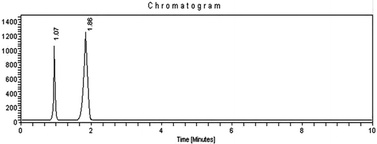Gas liquid chromatography-flame ionization detector (GLC-FID) residue analysis of carbamate pesticide in freshwater fish Labeo rohita
Abstract
In this present study, the identification and quantification of carbosulfan pesticide residues in freshwater fish Labeo rohita is developed. A gas liquid chromatographic (GLC) method was successfully developed for the determination of carbosulfan residues. The fish were exposed to 1/10th sublethal concentration of carbosulfan i.e. 0.12 mg L−1 for 15 days. The fish samples were extracted with n-hexane, cleaned up and purified. The order of tissues where the carbosulfan pesticide bioaccumulation takes place were in the order: gill < kidney < liver < muscle. These results suggest that prolonged exposure to sublethal concentrations of carbosulfan in Labeo rohita leads to increased accumulation of pesticide residues in tissues.


 Please wait while we load your content...
Please wait while we load your content...